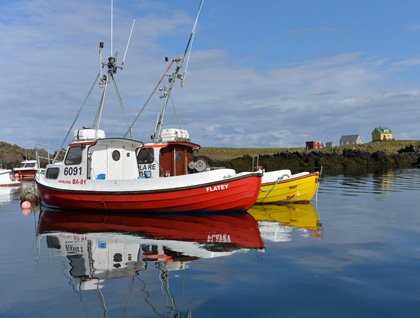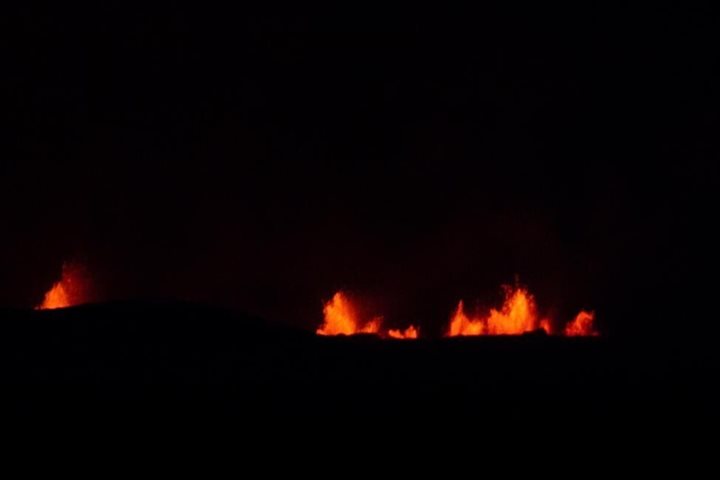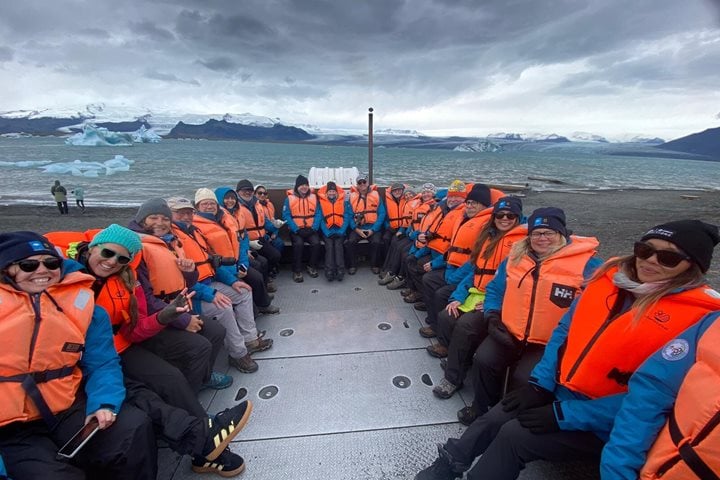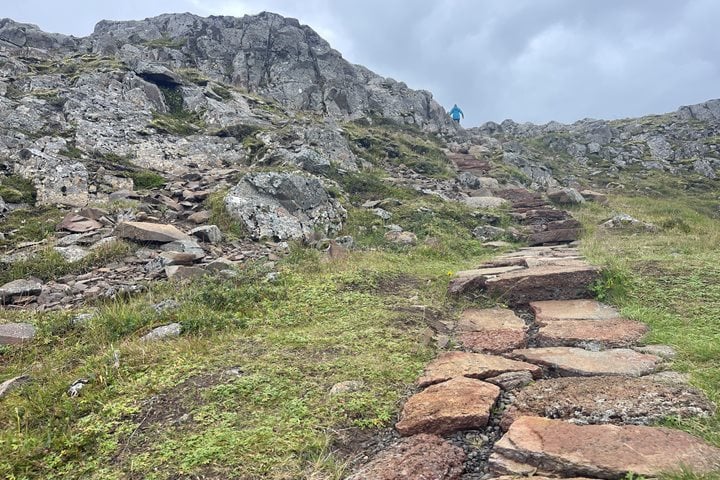The first morning of our Icelandic adventure aboard National Geographic Explorer opened to reveal the endless panorama of the Látrabjarg Cliffs, their upper reaches still shrouded in low clouds. This 9-mile-long landmark fri nges the north coast of Breiðafjðrður, and the combination of the shallow expanse of the broad bay, full of tasty fish, and the convenient ledges and slopes of the cliffs provides for a huge concentration of breeding seabirds, most significantly the razorbills. Many of us had our first sightings of Atlantic puffins, as well as common murres, or guillemots, keeping a paternal watch over their chicks. Northern fulmars glided low over the dark water, its surface broken with churning patches of mackerel, just the surface of the much larger “bait balls” below. It was thrilling to watch a pod of white-beaked dolphins who were feeding on these come over to bow-ride with the ship.
Our afternoon was spent on the small and charming island of Flatey. Settled early by Scandinavian pioneers, it was the site of an Augustinian monastery in the 12th century, then a thriving fishing community, trading with the German-based Hanseatic League, becoming the commercial hub of the region by the 18th century. However, it became depopulated in the 20th century, so today is deserted except for sheep and a number of families who return to their houses only in the summer. In the center of Flatey (“flat island”) is a beautiful Lutheran church built in 1926, decorated with stunning frescoes by a visiting Catalan artist Baltasar Sampar, depicting the history and religious life of Flatey. Next to it is a tiny library, the smallest, and, dating from 1864, the oldest library in Iceland. Flatey is also the place where the one of the greatest treasures of Iceland was preserved, the “Book of Flatey,” a vellum manuscript created in 1387 which is the source for many of the Norse sagas.
The little island filled us with delight. Some of us walked with the photographers in the warm sunshine, putting into practice tips learned that morning. Birds abounded, and to our list were added snipe and oystercatcher, redshank and red-necked phalarope. Kittiwakes and Arctic terns swooped overhead. A snow bunting poured forth a song from its rocky perch. Mallard and eider garnered their ducklings as we cruised by in Zodiacs. It was a perfect Icelandic summer’s day as we sailed away, taking with us memories of tranquility, gaily painted houses, and friendly local people with their silver-haired children.








